What You Need To Know About Headaches – 5 Simple Essentials Oils Remedies for Headaches
Essential Oils for Headaches: What You Need to Know
Overview
Headaches are an extremely common ailment that all of us suffer from occasionally. According to WHO, headaches are among the most common—and yet underestimated and undertreated—disorders of the nervous system. About half of the global population suffers from some form of recurring headache disorder, and a majority of them are women. While most headaches are not serious and rarely affect your long-term health, they can be painful, disabling, and cause significant loss of productive hours.
Most people turn to over-the-counter painkillers like paracetamol or aspirin for relief, but there has been growing concern about the long-term safety of these drugs. Prolonged use of painkillers has been known to bring unpleasant side effects, which can be particularly concerning for individuals with migraines and chronic headaches.
This is why health professionals all over the world are now encouraging people to seek help from alternative remedies like essential oils, which are known to be safe, effective, and sustainable for long-term use. Unlike conventional medicines that focus on treating symptoms, plant-based oils work on the underlying cause of headaches (such as stress and hormonal changes) and can help manage the condition more holistically. Although headaches can be managed holistically, I recommend contacting your healthcare professional extreme headaches and before attempting any of the recommendations in this article. This recommendation in this article and on this website should not be taken as medical advice.
Which essential oils are good for headache relief?
Various factors are known to trigger a headache. Its causes include but are not limited to—a sudden disruption of routine, lack of sleep, caffeine overuse, excessive physical or mental exertion, skipped meals, exposure to allergens, certain types of foods or drinks, dehydration, medication side effect, and hormonal changes. Some neurological conditions can also cause frequent headaches, which may be further aggravated by a stressful lifestyle.
There are over 150 types of headaches! Different types of headaches have different underlying causes and, therefore, need different treatments to cope with them. To use essential oils for headaches effectively, it is very important to identify your condition and potential triggers.
Based on symptoms and causes, headache disorders are broadly classified into three types: tension headaches, migraines, and sinus headaches. There is also a fourth type called hormonal headaches, which feels very similar to migraine but without the aura.
Essential oils for tension headaches
Tension-type headache, also known as stress headache, is the most prevalent headache disorder in the world that most people get every once in a while. Its symptoms include a dull persistent pain of mild to moderate intensity, along with a feeling of pressure or tightness around the temples, eyes, head, and neck. Some people describe the sensation as a tight band around the head. Symptoms usually last up to a few hours and are not known to have any serious long-term impact.
As evident from the name itself, tension headaches are triggered by stress or tiredness. Aromatherapy with mood-lifting and muscle-relaxant oils can help ease tightness around the neck and shoulders and improve blood flow to the forehead area.
1. Peppermint oil
Peppermint is one of the most powerful natural analgesics on the planet—it is especially unmatched when it comes to relieving short-term, high-intensity localized pain. Menthol, which is the major bioactive compound of peppermint, has a tingling or cooling effect on the skin that acts as a numbing agent and blocks pain signals.
Researchers have found that topical application of peppermint oil on the forehead and neck area can promote blood circulation and help release pressure, thereby easing pain and anxiety. Based on a 2016 study, the analgesic efficacy of peppermint oil is comparable to that of paracetamol or acetylsalicylic acid (aspirin). A recent 2023 study also recommended peppermint as one of the most effective essential oils for headaches—it was found helpful in both episodic and chronic types of tension headaches.
In another placebo-controlled trial, a 10% solution of peppermint in ethanol was as effective as 1000 mg of acetaminophen, a commonly used analgesic drug. Researchers pointed out that peppermint was not only well-tolerated but also quick in relieving symptoms. All participants reported that the pain intensity was significantly reduced in just 15 minutes of application and continued to lessen over the next hour.
2. Wintergreen oil
Wintergreen is one of the most popular essential oils for headaches and is often found as a key ingredient in over-the-counter pain-relief ointments. It has a similar cooling and numbing effect as that of peppermint, although the oil comes from an entirely different family.
The oil’s analgesic property comes from its unique composition, which is about 98% methyl salicylate—a compound that structurally resembles aspirin. Research shows that topical application of methyl salicylate has a similar effect as that of oral aspirin in relieving pain and inflammation. Moreover, its fresh, woodsy, mint-like aroma promotes a sense of comfort and well-being, which can improve mood and reduce cortisol levels.
Peppermint also contains small amounts of methyl salicylate and works synergistically with wintergreen. Studies have shown that a combination of these two oils has a stronger analgesic effect than either of them alone.
How to use
Local application: Combine 4-5 drops of peppermint with 10 ml of carrier oil. You can blend 2-3 drops of peppermint with 1-2 drops of wintergreen (do not use more than 2 drops) for this purpose. With the help of a cotton ball or roller bottle, apply the mixture on the forehead and back of the neck.
Head massage: Giving yourself a soothing head massage is a time-honored way to relieve pain and promote relaxation. Add 5-6 drops in 15 ml of sesame or almond oil (both of these oils are recommended in ayurvedic medicine). Using your fingertips, massage the scalp in light, circular strokes for 10-15 minutes to improve blood circulation.
Essential oils for migraine headaches
Unlike tension headaches which do not represent an underlying condition and are fairly easy to treat, migraine is a serious neurological disorder and requires a holistic management approach. Aspirin, paracetamol, ibuprofen, and other painkiller drugs have limited use in migraine treatment, and preventive medicines and supplements may be needed.
Migraine headaches are marked by severe and disabling symptoms, which are further aggravated by physical movement. A throbbing, pulsating pain (typically on one side of the head) is accompanied by a feeling of nausea, extreme sensitivity to light and sound, and visual disturbances. Symptoms can last up to 2-3 days, and the pain may come back once the effect of the painkiller subsides.
Essential oils can be powerful tools in migraine management—from both preventive and therapeutic perspectives. Plant-based aromas are proven to have a deeply soothing effect on the central nervous system, which can improve sleep quality and promote hormonal balance. Their holistic working mechanism can also help manage underlying causes and triggers, apart from naturally relieving symptoms.
1. Chamomile oil
Chamomile has long been regarded as a standard treatment for migraines in traditional Iranian medicine. Research suggests it may be one of the most effective essential oils for headaches and anxiety.
Multiple studies have shown that topical application of chamomile oil (diluted with sesame oil) on the forehead and temporal area can help reduce symptoms of migraine without aura. In a 2018 placebo-controlled trial, topical chamomile gel significantly reduced symptoms like pain, nausea, vomiting, and photophobia within 30 minutes of application. Researchers found that chamomile therapy was most effective when administered at the onset of an attack.
Scientists have found at least four ways by which chamomile works for migraines:
- It contains chamazulene and apigenin compounds that inhibit the expression of iNOS, which is a key molecule in migraine. Blocking nitric oxide synthases is known to be an effective treatment for migraine without aura, cluster headaches, and chronic tension headaches.
- Flavonoids in chamomile have a strong inhibitory effect on prostaglandin signals and can block the sensation of pain.
- Polyphenols present in the oil can reduce inflammation of blood vessels at the site of migraine pain.
- Chamomile works as a nervine soothing agent and improves mood.
2. Lavender oil
Lavender is one of the most well-researched essential oils and is known to have powerful analgesic and anti-inflammatory properties. Evidence shows that inhaling its calming aroma has an anxiolytic effect on the mind. It stabilizes mood, promotes relaxation, and aids the nervous system in healing.
In a 2012 study, forty-seven patients suffering from migraine headaches reported significant relief from pain severity and related symptoms after 15 minutes of lavender inhalation. Researchers suggested that inhaling lavender aroma may be an effective and safe treatment option for migraines.
In another placebo-controlled trial, three months of lavender therapy significantly reduced the frequency and severity of migraine attacks. Moreover, participants did not report any complaints or side effects during the long trial period.
How to use
Inhalation: Diffuse 3-4 drops in a well-ventilated room.
Preventive balm: Gently apply diluted essential oil (3-4 drops in 10 ml of sesame oil) on your forehead and neck area as soon as you suspect a migraine attack coming along. Make sure not to massage or rub vigorously, and do not use this remedy when the pain has already reached a severe stage.
Essential oils for sinus headaches
Sinus headaches are caused by inflammation or blockage of sinus cavities. It can happen when the body starts making extra mucus as a response to an infection, allergy, or exposure to environmental stressors. Sometimes, excess mucus thickens and builds up around sinus cavities, congesting them and putting pressure on the cheeks, nose, and the area between the eyebrows.
Sinus pain is persistent (not throbbing) and almost always accompanied by a stuffy nose and achy face. Immune-boosting and decongestant essential oils can help clear sinuses and provide relief from symptoms.
1. Eucalyptus oil
Eucalyptus enjoys high regard in traditional medicines and is known to have wide-ranging therapeutic uses. It is one of the most highly recommended essential oils for headaches caused by colds and sinusitis. Research shows its warming aroma works like an expectorant to loosen mucus and helps encourage drainage, opening nasal airways and releasing pressure. It also soothes and nourishes inflamed membranes and supports deep breathing.
Studies have shown that eucalyptol—the major bioactive compound in this essential oil—has strong antimicrobial and anti-inflammatory effects that can help you recover faster from common infections like sinusitis.
Essential oils of rosemary, thyme, cinnamon, black pepper, clove, and basil are also known to have immune-boosting and expectorant properties and can help with sinus headaches.
How to use
Steam inhalation: Add 5–6 drops to a bowl of hot water. Cover with a towel and deeply inhale the steam for 10–15 minutes. Repeat twice a day until the infection subsides.
Possible risks and safe practices while using essential oils
Essential oils are generally regarded as safe when used in recommended amounts and with proper dilution. However, be sure to follow some necessary precautions, such as diffusing in a ventilated room, limiting the exposure to no more than 40-45 minutes, and starting with a small amount.
Do not use more than 3-4 drops at a time, as strong aromas can sometimes worsen headaches. If you have a history of allergic skin diseases, consider performing a patch test before using essential oils topically.
Final thoughts
Essential oils can be powerful tools for the holistic management of headaches and migraines. Evidence suggests these healing aromas can help block pain signals, soothe inflammation, sedate the nervous system, stabilize mood, ease anxiety and stress, improve sleep, and promote hormonal balance.
However, it is important to understand that essential oils, like other forms of herbal medicine, are mostly preventive and health-promoting in their approach. They are most effective in the early phase of a headache and may not help with acute pain or a full-fledged migraine.
If you are experiencing frequent headaches or feel your symptoms are getting worse with each attack, consider speaking with your doctor about it. Self-care strategies like a daily walk, meditation, and some yoga poses (like Child’s pose or Cat and cow pose) are also known to help in chronic headache management. Magnesium is also a good natural remedy for headaches. Consider adding it to your daily health regimen. I use this magnesium products from Activation Products!
Remember, “Do Something Everyday that Heal Your Body!”
To Your Health!
References
https://www.who.int/news-room/fact-sheets/detail/headache-disorders
https://thejournalofheadacheandpain.biomedcentral.com/articles/10.1186/s10194-022-01402-2
https://pubmed.ncbi.nlm.nih.gov/27106030/
https://www.sciencedirect.com/science/article/abs/pii/S094471131180053X
https://www.aafp.org/pubs/afp/issues/2007/0401/p1027.html
https://pubmed.ncbi.nlm.nih.gov/8805113/
https://pubmed.ncbi.nlm.nih.gov/18698012/
https://www.sciencedirect.com/science/article/abs/pii/S2210803316300033
https://pubmed.ncbi.nlm.nih.gov/22517298/
https://www.ncbi.nlm.nih.gov/pmc/articles/PMC3612440/
https://pubmed.ncbi.nlm.nih.gov/25238714/
https://pubmed.ncbi.nlm.nih.gov/29808331/
https://biolres.biomedcentral.com/articles/10.1186/0717-6287-48-7
https://onlinelibrary.wiley.com/doi/abs/10.1097/00005537-200404000-00027


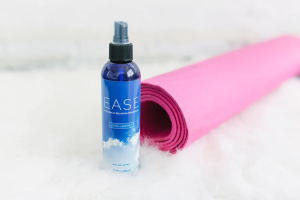










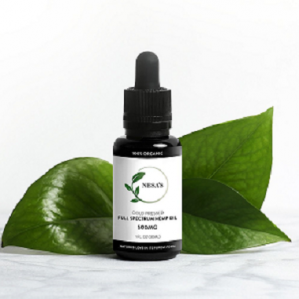
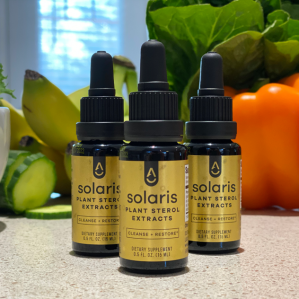
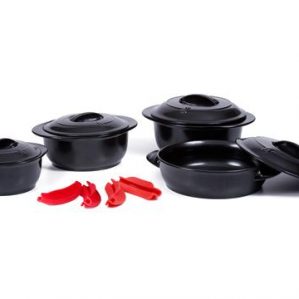
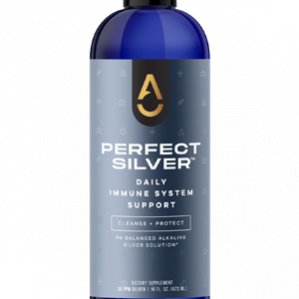












0 Comment